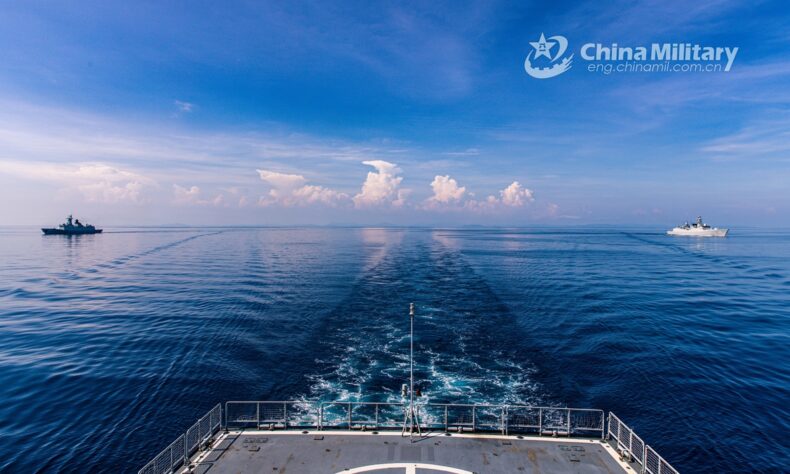After Nancy Pelosi’s visit to Taiwan, China fires multiple missiles threatening an escalation.

Source: Bing image
USA entry into the conflict:-
After Nancy Pelosi’s visit to Taiwan, China has begun a military exercise, firing multiple ballistic missiles posing an escalation to a full-blown war in an unmatched demonstration of power. An aircraft carrier with a nuclear submarine is leading the exercises, which are expected to last until Monday, as reported by China.
The Taiwanese authorities confirmed that 11 Dongfeng were flown over the coastal regions to mark the commencement of the exercises along with fiery rhetoric and warnings to Taiwan’s western allies not to interfere.
However, five of the missiles reportedly landed within the Exclusive Economic Zone of Japan, which falls 200 miles within the territorial waters. “China’s actions this time have a serious impact on the peace and stability of the region and the international community,” said Yoshimasa Hayashi, the foreign minister, asking China to immediately end the exercises.
Steps were taken by G7 countries:
He and Wang Yi, his Chinese counterpart, were among the foreign ministers attending a meeting of the Association of Southeast Asian Nations in the Cambodian capital Phnom Penh which was entirely overshadowed by events in the Taiwan Strait. Beijing canceled a meeting between the two men in response to a statement by the G7 group of nations, of which Japan is a member, “unjustly accusing” China over the exercises.
US secretary of state, Blinken, was also at the summit but as per the reports he and Wang avoided each other. China has time and again alleged that the US in general and particularly US Speaker Nancy Pelosi visited Taipei with an aim to insinuate tensions in the sensitive three-way relationship.
Hua Chunying, of the Chinese foreign ministry, said, “In the face of this blatant provocation, we have to take legitimate and necessary countermeasures to safeguard [our] sovereignty and territorial integrity.” The military exercises are China’s biggest in decades, and the most direct threat to the island since a putative invasion was called off in 1950.
The People’s Liberation Army (PLA) announced that there were six areas encircling the island, which further extended to seven, to be no-go zones during the exercise. Some parts of the region extend over to Taiwan into the territorial seas and airspace, extending 12 miles offshore in an attempt to show that the island is a “part of China”.
Major-General Meng Xiangqing, who is an analyst at China’s National Defence University, said, “This real-combat exercise … is conducive to reshaping the strategic structure in favor of unification with the island. The scope is wide, the distance to the island is near, the force is strong, and the elements are comprehensive.” He called the exercises “unprecedented” and added that they could easily turn into “real war”.
China started doing military training around Taiwan:
They began with the army of the PLA’s Eastern Theatre Command conducting “long-distance live-fire shooting drills” to carry out “precision strikes at specific areas in the east part of the Taiwan Strait”, according to the PLA Daily, the official military newspaper. Videos showed Dongfeng missiles being fired from a wooded area in Fujian province, directly across the Taiwan Strait on the mainland.
Japan has been keenly monitoring the exercises and has confirmed that at least four of the missiles flew over Taiwan. Moreover, 22 Chinese warplanes crossed the median line of the Taiwan Strait and entered the island’s air defense identification zone, and warships were spotted to the east of Taiwan.
A drone flew over the Kinmen islands, a small outpost of Taiwanese territory barely five miles off the Chinese mainland, prompting the local defense forces to fire warning flares in response. The Taiwanese air force responded by scrambling Mirage 2000 and F-5 fighter jets. The foreign ministry accused China of “following the example of North Korea” with its provocative missile tests.
The US has been pressing over the matter persistently, to limit the Chinese presence, however, the containment has been unsuccessful. Chinese presence in the Indian Ocean is substantially increasing with the weakening of Sri Lanka in the South. However, India can still counterbalance China, if only it is supported by nations like the US.













